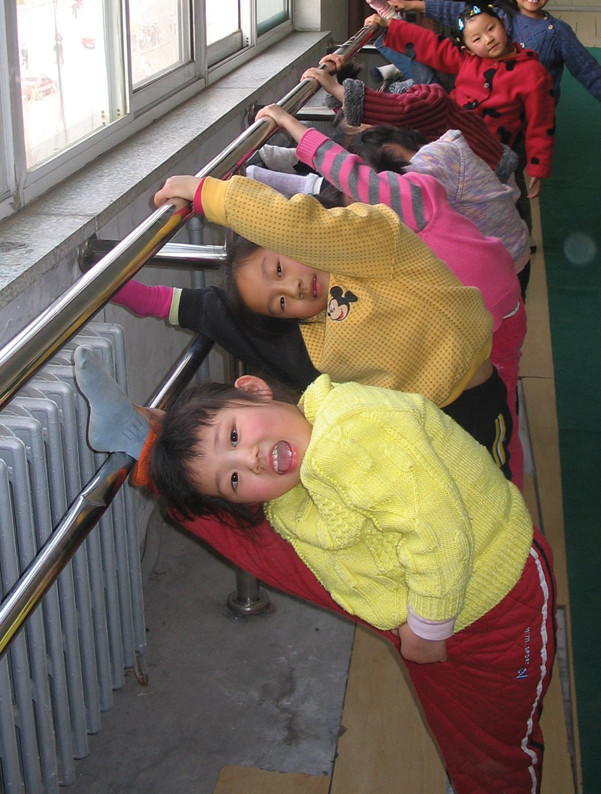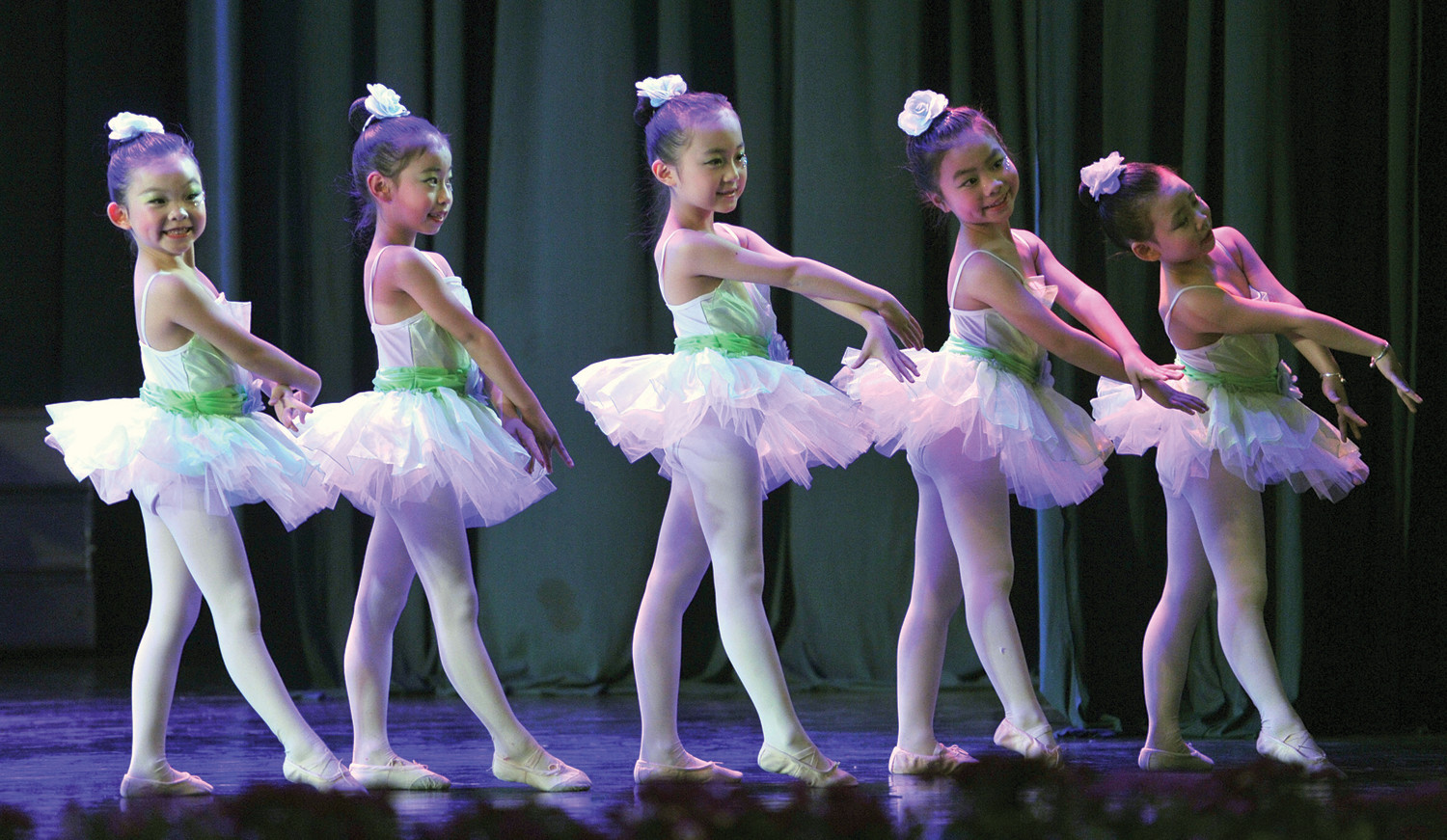A Ballet Teacher in China
I never planned to live in China. To me, China was a country with delicious food, amazing acrobatic ability, vibrant colours, interesting architecture, but it was so far away. Still I came to China to teach ballet, that was my goal. Young and having only just graduated from the Hungarian Dance Academy with a Ballet Teaching degree, I scanned websites looking for dancing teaching jobs applying for different vacancies, including one in China. I was rather shocked when I opened my inbox to find that I had been offered a job in Handan, China! To be honest, when I applied I never thought about going to China. It was just one of a few jobs on a website and I had not given it a second thought when I sent off my Curriculum Vitae. After reading the email, I wrote to my family saying only “I got a job in …” then had them scroll all the way down to the bottom of the email where I wrote “China.” I then got a call from my dad who asked: “So when are you going?” It was as simple as that. There was one main reason why I decided to go: I thought “if I don't go to China, I will always wonder what it would have been like.” With that thought in mind, I packed up my suitcase and went.
When I arrived in China I was met by a little old lady holding up my name on a sign, and a man in his 40s. They did not speak a word of English. They took my suitcase and we were off onto a bus, then off and onto another bus, then off again until we got to the biggest train station I had ever seen in my life: Beijing West Train Station (北京西站). It was the first of my many adventures in China. The train ride was four-and-a half hours on a hard seat after what had already been a nine-hour flight. But eventually I arrived in Handan, which would be my home for six months. Handan is not a place where one would expect to find a foreign ballet teacher.
I spent three days at the home of the little old lady, not knowing when I would start working, or where, or who would be my students. The lady only spoke Chinese, and I was learning a few words each day. Finally, after four days in her flat, I was taken to the main building of Handan Lilac Education Group and introduced to a lot of directors. Of course, I did not understand anything, but I was welcomed and told that I would be teaching four hours of dance and 16 hours of English. That was when I put my foot down and through a translator said: “I didn't come to teach English, I am a ballet teacher. If you need an English teacher, then you shouldn’t have invited me.” They rearranged my schedule to teaching 16 hours of dance.
Then my new life started. I moved into the dormitories where I had my own flat in a building where all the foreign teachers lived as well as Chinese students studying at Handan Polytechnic College. I was scheduled to teach dance in the morning at two different kindergartens, and in the afternoon at Lilac Primary School. At Lilac Education Group, there were about 13 other foreign English teachers, but I was the only dance teacher.
My first day of teaching would be my first challenge. I was taken to one of the school’s kindergartens. In the West I had been used to entering a ballet studio and finding little girls in pink leotards and pink ballet shoes running around the ballet studio before their teacher came in. In Handan, I was led to the dance studio and there were 40 four-year-old kids all dressed in their everyday clothes standing in line like soldiers, looking at me. Their teachers were also looking, waiting to see what I would do. I put on some classical music and taught them the positions of the arms and the first two positions of the legs. I then tried to teach them the basic ‘chassé’ step, which required them to open a leg to the side in preparation, then jump with their legs together moving to the side, and land in the same preparatory position to go again. That is when chaos happened. These 40 kids were disciplined as long as they stood in their spots which were marked on the floor. Once they got the chance to move, then like most kids they started to laugh and moved all the way to the other side of the studio. Luckily, their teachers were there and were able to keep them under control. I had three groups of children that first morning, and I did not try to do the ‘chassé’ step again until much later. I stuck to teaching them the basic positions of arms and legs, and did lots of stretching exercises. After that first day I would quickly learn to control them and eventually I was able to teach them a few dances.

At the primary school I got to pick students to be part of a dance group. I was excited by just how many talented girls there were. I found that in China the bodies are more naturally supple and flexible than they are in the West. Other than my dance group, I also taught dance to various different grades, all of whom were dressed in their everyday clothes. Not only were my students learning, but I was also learning. I was studying the Chinese language with a private teacher and I learnt how to say the positions of the arms and legs in Chinese. I got so excited when one student came to me and said “duzi teng” (tummy hurts) and I actually understood! I let her sit down, then suddenly all my students raised their hands and started saying “duzi teng”.
My days were spent teaching, but during my free time I studied Chinese and rode around on my bike. During holidays I travelled to different parts of China. Christmas was spent in Xi'an, and for Chinese New Year I was on top of one of the five holy mountains Tai Shan. Watching TV was also interesting for me, and I loved the Chinese New Year programme and was so excited to see dances from different Chinese minority groups. After eight months in Handan, I was offered a job in Beijing to teach ballet at Danz Centre. While Handan had been a unique experience, I realised it was time to move on. I was after all a ballet teacher, and teaching dance in Handan to kids in ordinary clothes was not quite the same thing. So I moved to Beijing, and was greeted with the familiar sight of little girls in leotards running around the ballet studio before I arrived.
Ballet was first established in China in 1954 with the founding of Beijing Dance Academy. But there are still only a few ballet schools in the whole of China. Unlike Beijing Dance Academy which prepares students for professional dancing careers, anyone is welcome to take a dance class at Danz Centre. I had the privilege of visiting Beijing Dance Academy after a year in China. It was wonderful for me to find a whole area of Beijing dedicated to dance. There were so many dance shops around the academy selling ballet shoes, pointe shoes, costumes, fans, CDs, DVDs, books, etc. I entered the Beijing Dance Academy with a fellow foreigner who was also a dancer. We thought we would not be able to get past security, but they let us in. We visited several different floors with about six dance studios on each floor. In every dance studio there was some kind of class going and we stopped at each and glanced through the windows. Behind one we could see twelve-year-old girls working on their ‘frappés’ (beats) at the barre. Another studio had girls doing gymnastic flips. In one, boys were jumping double ‘tours en l'air’, and in another they were performing a traditional Chinese dance while holding drums. Walking the halls of the Beijing Dance Academy and glancing into all the dance studios I felt at home. It was wonderful to see everyone working and so dedicated to dance.
I came to China to teach ballet, but I think I was the student in China. Those first days of teaching in Handan was a real challenge, but gave me experience in teaching in any kind of situation. Then to move to Beijing and see with my own eyes that ballet has a special place in China. I never regretted answering that email with a yes and moving to China. Ten years later, am now teaching ballet in Russia, and I can say with honesty that those days in China led me here.

 Share on Facebook
Share on Facebook Share on Twitter
Share on Twitter Share on LinkedIn
Share on LinkedIn